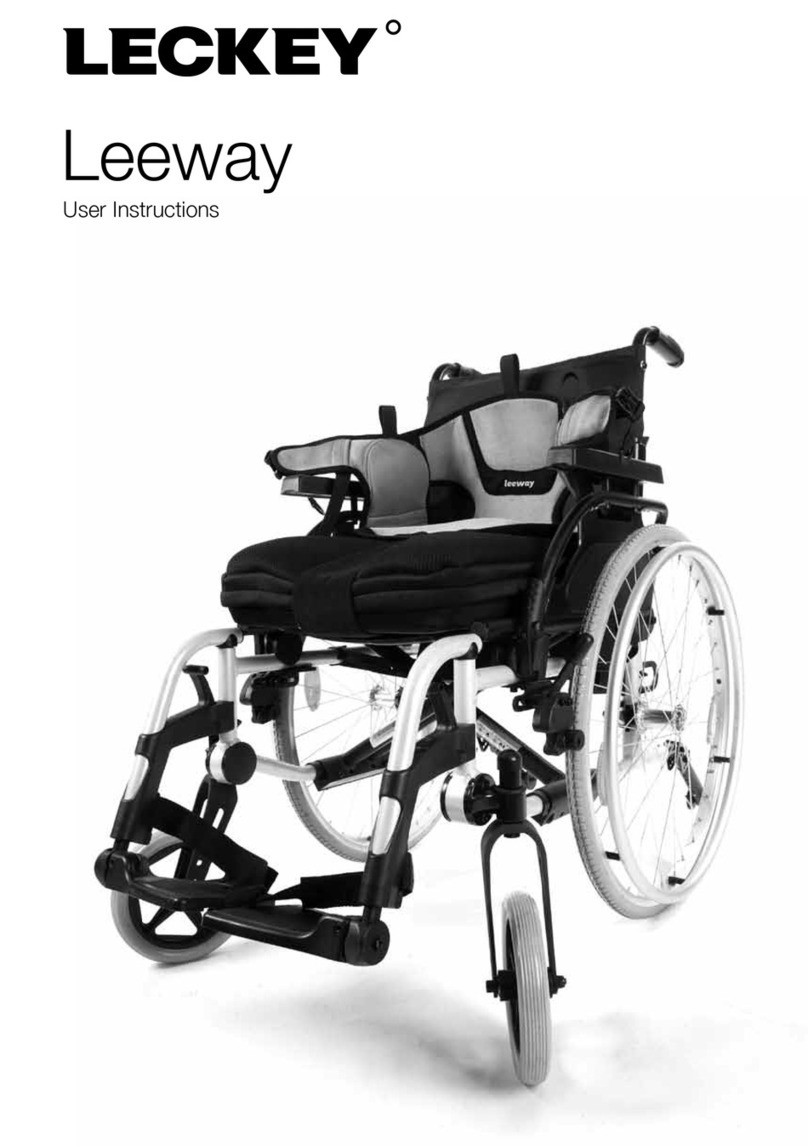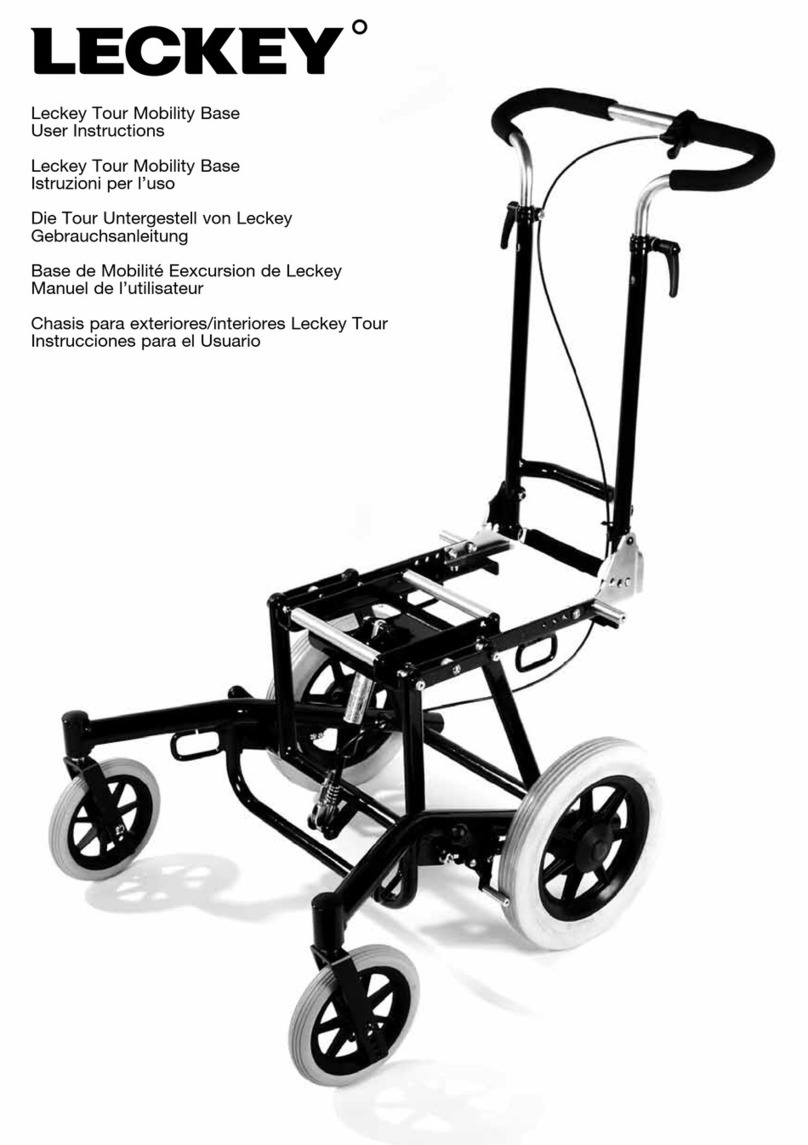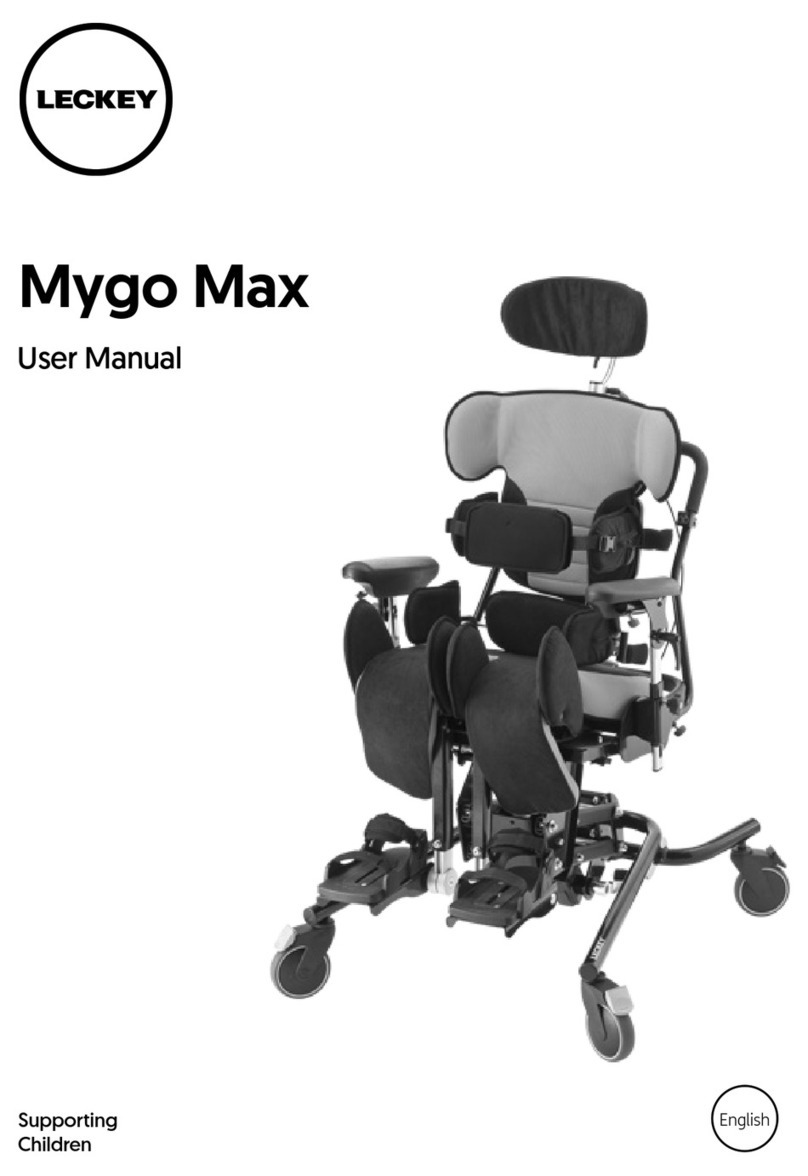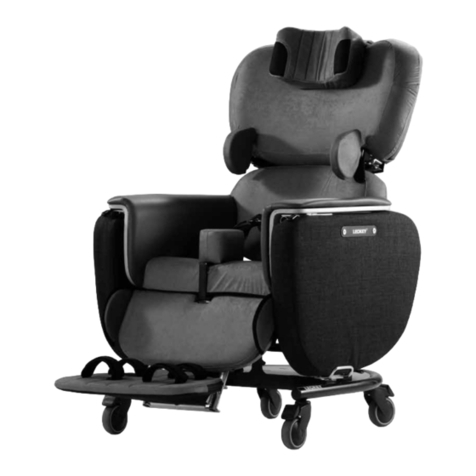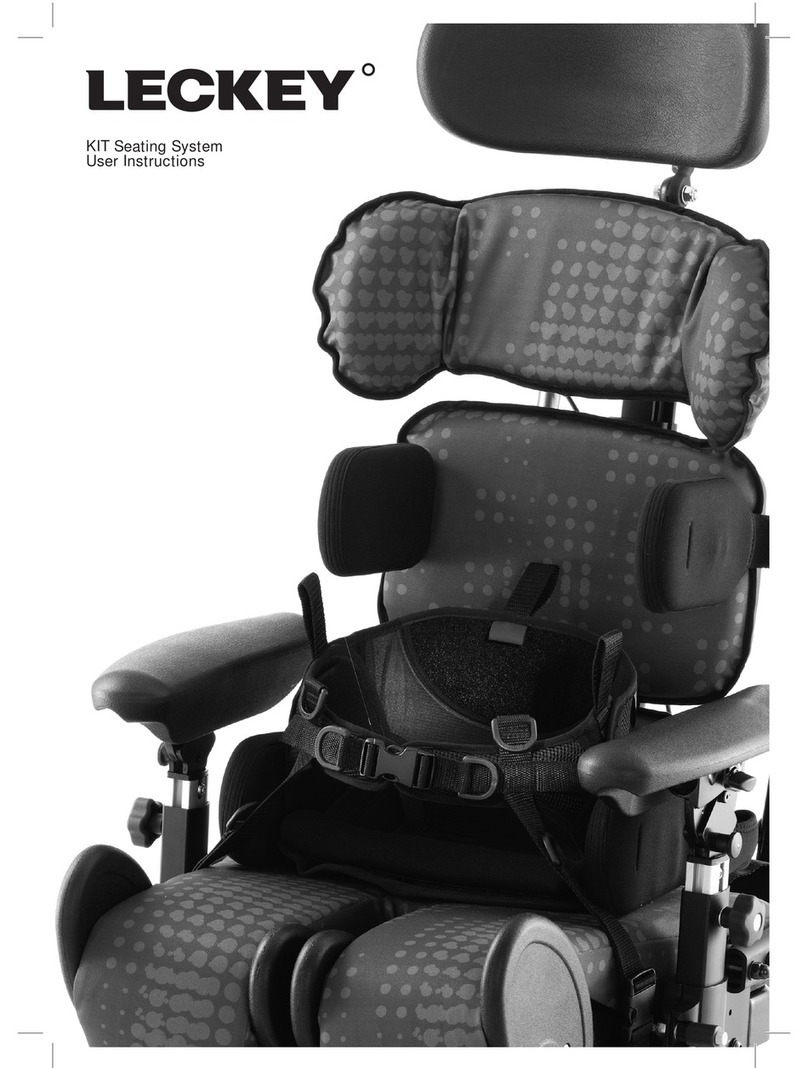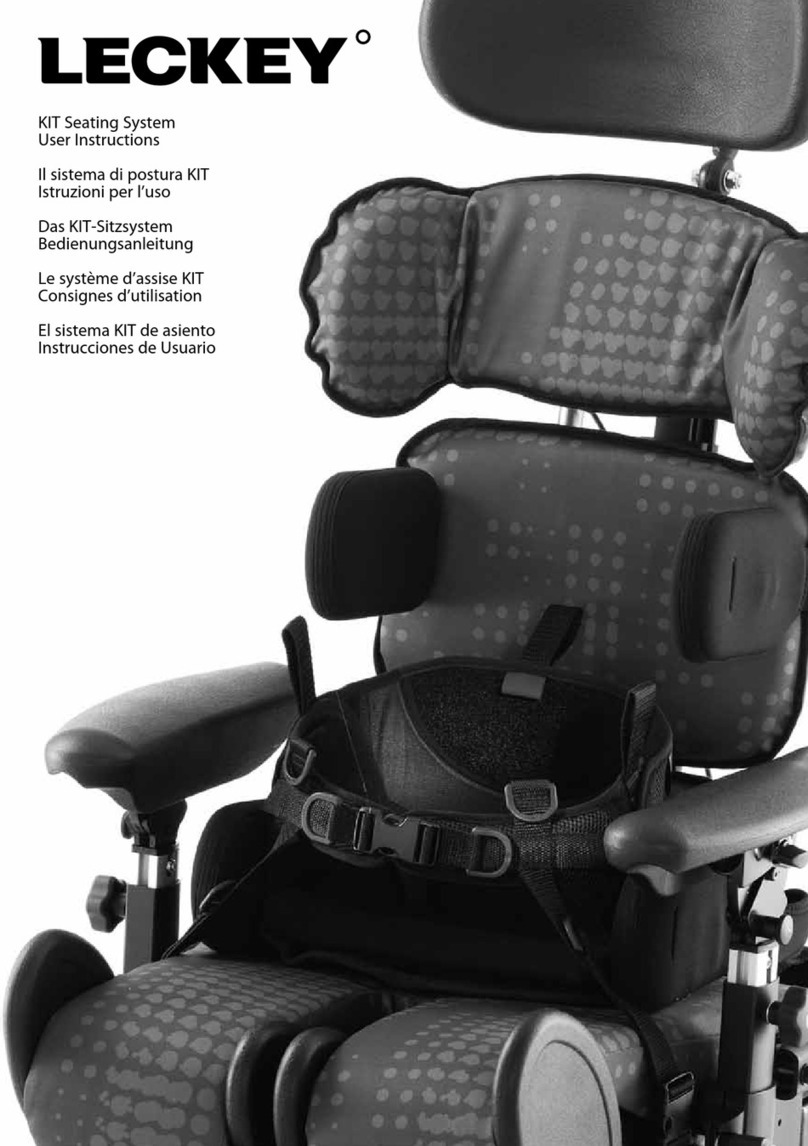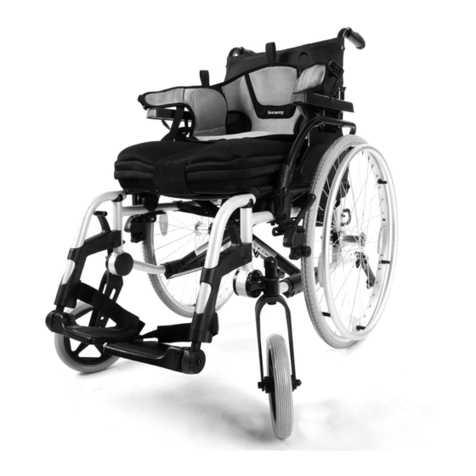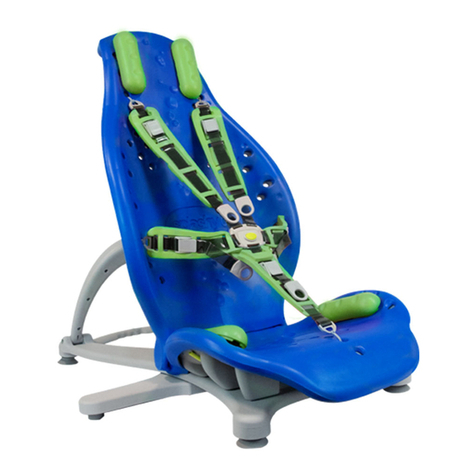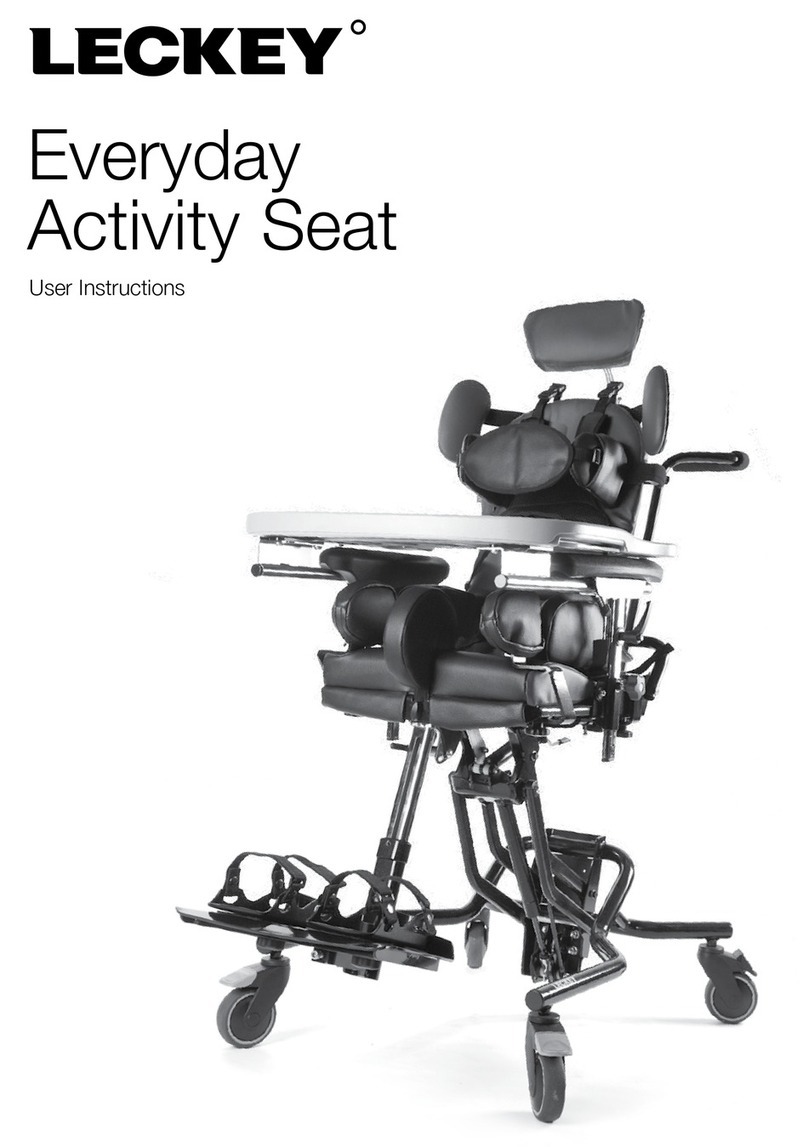
Everyday Activity Seat User Manual p5
1. Always read instructions fully
before use.
2. Users should not be left
unattended at any time whilst
using Leckey equipment.
3. Only use Leckey approved
components with your product.
Never modify the product in any
way. Failure to follow instructions
may put the user or carer at risk
and will invalidate the warranty on
the product.
4. If in any doubt as to the continued
safe use of your product or if any
parts should fail, please cease
using the product and contact our
Customer Care Team or your local
dealer as soon as possible.
5. Carry out all positional
adjustments and ensure that they
are securely fastened before you
put the user into this product.
Some adjustments may require
the use of a tool which is provided
with each product. Keep all tools
out of reach of children.
6. When placing the user into the
seat, for safety reasons, always
secure the pelvic harness rst.
7. When the product is stationary
ensure that all four castors are
locked and facing away from the
base. This is especially important
SECTION 06:
SAFETY INFORMATION
when the tilt-in-space and back
recline facility is in use.
8. When the seat is in use please
ensure that the height adjustment
pedal or bolts and tilt-in-space
are locked off and cannot be
adjusted accidentally, especially if
there are children in the area.
9. The Everyday Activity Seat is
not a wheelchair and although
mobility is an important feature of
the seat, we do not recommend
that users be moved over uneven
surfaces whilst in the equipment.
All due care and attention should
be taken if transporting the user
from one seat to another.
10. The Everyday Activity Seat has
not been crash tested therefore
cannot be used in your transport.
11. Never leave the product on a
sloping surface greater than 5
degrees. Always remember to lock
all the castors.
12. Only use the push handle to steer
and move the seat from one area
to another. Never use the tray for
this purpose.
13. The product contains components
which could present a choking
hazard to small children. Always
check that locking knobs and
bolts within the child’s reach are
tightened and secure at all times.
14. Leckey products comply with re
safety regulations in accordance
